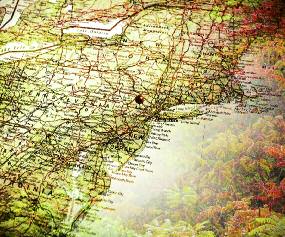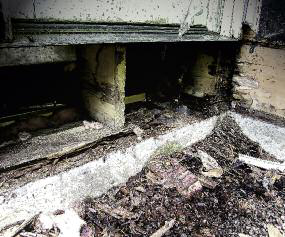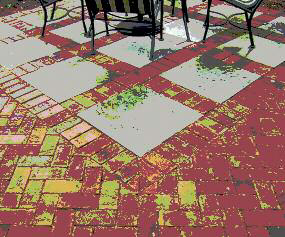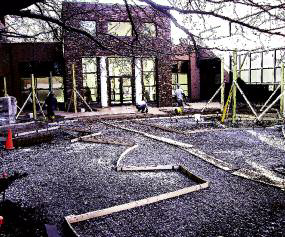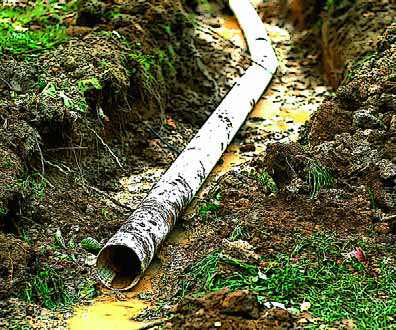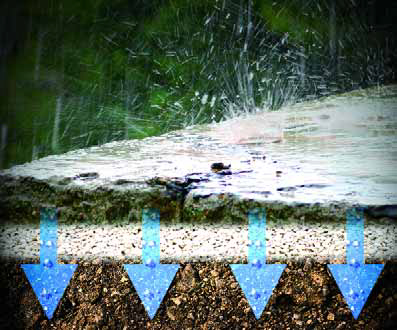On the Level
I’ve been a fanatical WaterShapes reader from the very beginning, drawn not only by the cool projects but also by its publication of columns and features written by people who actually had experience in the field. Sometimes I love those writers, sometimes they bug the daylights out of me – but always, I appreciate getting information right from the source. And I can’t recall ever having come away from reading WaterShapes without being inspired: pushed to think outside my comfort zone and, more important, convinced it’s always, always best to
One of the most common themes repeated in this magazine is that selecting materials for projects can make the difference between truly artistic designs and those that are either inappropriate or just plain boring. It’s a point worth pressing: Materials truly matter, and the importance of knowing your options and keeping pace with changes in the marketplace can never be overestimated. Through the past few months, for example, I’ve been working with a couple who live in a home that’s an architectural
Have you ever noticed how often the costliest part of a project turns out to be something that will ultimately be hidden from view? This happens quite frequently in projects involving any sort of slope, where the piers and grade beams beneath swimming pools, for example, can cost far more than the rest of the overall project. In my own work, I’ve noticed this budgetary quirk most frequently when it comes to retaining walls, where providing the foundation they need to withstand the forces applied by a slope can be startlingly extensive and expensive. It’s not what you’d call glamorous work, but it certainly is important – and will vanish completely from view. Most often, we’re called on to build these walls when
Every time I open a landscape trade magazine, I’m bombarded by ads from just about every paver manufacturer on the planet. From the newest faux-stone concrete pavers and ADA-compliant bricks to granite, flagstone, mica and other slab species, we have more choices than ever before for our projects. Some professionals approach this wealth of possibilities and play it safe – not caring so much about what’s the latest and greatest but focusing instead on what’s most familiar and time-tested and being interested in little more than providing clients with surfaces that can safely be walked on. Fortunately, however, there are lots of us who take a different view, putting care and thought into the materials we select for our walkways, patios and terraces and working closely with our clients to make certain the resulting surfaces meet their needs. In other words, there’s
If you ask my employees and manage to get an unguarded response, they’ll tell you that I’m an unrelenting pain in the neck – a real tyrant. That’s because I’m always asking nagging sorts of questions such as, “Why isn’t this project finished yet?” or “How much longer is this going to take?” or “Can you speed things up?” My point in asking, of course, is to let them know on some level that if I were on site and was responsible for what was happening, we’d already be
I’ve expended lots of ink in recent issues extolling the virtues of good water management, but that’s nothing new: Through the years, in fact, I’ve written copiously about the need for conservation and sensible stewardship of the most precious of our natural resources. And this all makes sense, given both the needs of our society and the fact that we who read and write for WaterShapes all derive some portion of our livings from the work we do with water. On those levels and more, water may be seen as our
I’ve taken up a fair amount of my column space in WaterShapes with discussions of the wise use of water, and for good reason: What could be more important to watershapers than knowing how to make the best possible use of the material that defines our profession? And what could be better than the fact that it’s possible to approach the subject in positive ways that bode well for the future? The common thread in all of this coverage – whether it’s about conservation, constructed wetlands or rainwater harvesting – is that, ultimately, our aim must be to
Not long ago, I did a pair of columns on healing gardens and their benefits. If you’ll recall, I preached the importance of persuading hospitals in particular to include these spaces in their overall site plans as a means of providing garden environments for patients, patients’ families and hospital staff: These spaces reduce stress, help patients heal more quickly and give everyone who visits them a soothing sense of tranquility. I’ve attempted to the greatest extent possible to practice what I preached, and through the years I’ve installed numerous health-specific gardens at local assisted-living centers, Alzheimer’s care facilities and even at a center for emotionally-challenged children. But truth be told, I haven’t met with much success with our local hospitals, despite the fact that healing gardens have caught on with countless such facilities coast to coast. I don’t know quite why this is, but we
If you spend as much time as I do reading the myriad journals available to the landscape trades, you’ll no doubt have noticed their intense concentration on water quality and preservation. It’s about time these issues came to the fore: We’ve spent so much time as a society focusing on making our lives easier that many of us seem to have forgotten that water is a finite resource. Rest assured: I’m not somebody who believes that environmentalism is all about undermining the desire for beauty or luxury. Nonetheless and now more than ever before, it is apparent that we must find ways to manage, preserve and marshal dwindling water resources while at the same time we must continue to offer our clients spaces in which they can gather to enjoy beauty, tranquility or recreation. The hard fact is, only about three percent of the water on this planet can be










